Union Square
A National Historic Landmark
∴ Plaques ∴
∴ Plaques ∴
Uprising of 20,000
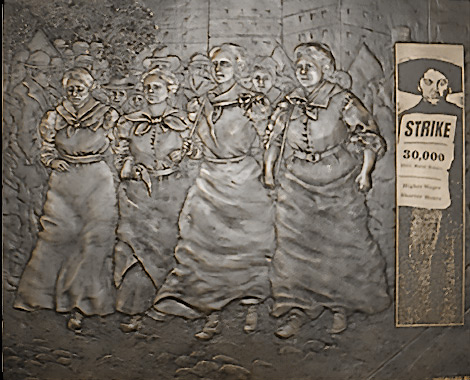
“I am a working girl, one of those striking against intolerable conditions. I am tired of listening to speakers who talk in generalities. What we are here for is to decide whether or not to strike. I offer a resolution that a general strike be declared–now!”
The crowd went wild. When the chairman finally restored order, he asked for someone to second the motion. The entire assemblage shouted its response. The young strikers walked the picket line all winter, beat off employer thugs, and shocked onlookers with their determination. They won a settlement that improved working conditions, though the union was only recognized in some shops. The Triangle Shirtwaist Factory was one shop that did not improve conditions.
Plaque Sources
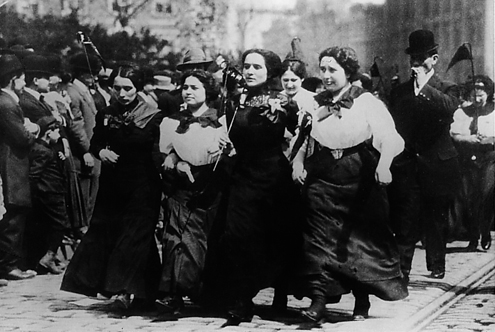
Four Women
This extraordinary photograph captures the emotional power of women marching in solidarity with unusual clarity. It has been used in many history books, identified in some as being from the beginning of the “Uprising of 20,000,” in November 1909. Other books have identified it as a march in the spring after the strike that included victorious strikers joining suffragists to demand better working conditions, an end to child labor, and the right to vote. Another source identifies the image as a clothing workers’ strike in Chicago in 1910.
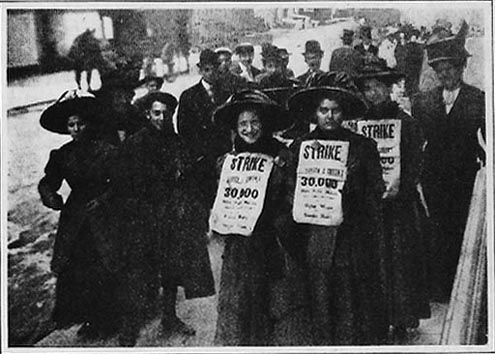
Photo from UNITE Archives, Kheel Center, Cornell University.
STRIKE Marcher
This extraordinary photograph captures the emotional power of women marching in solidarity with unusual clarity. It has been used in many history books, identified in some as being from the beginning of the “Uprising of 20,000,” in November 1909. Other books have identified it as a march in the spring after the strike that included victorious strikers joining suffragists to demand better working conditions, an end to child labor, and the right to vote. Another source identifies the image as a clothing workers’ strike in Chicago in 1910.
Related
ILGWU Quilt
Made by the garment worker and organizer Kathy Andrade with the Chinese and the Hispanic committees of the Coalition of Labor Union Women (CLUW), and presented to the president of the ILGWU at a convention circa 1987. Note the plaque depicting immigrants arriving under the gaze of the statue of liberty.
Private collection, photograph of quilt by Teddy Fung.
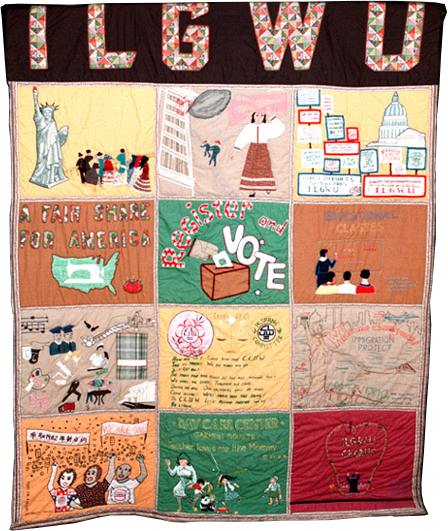
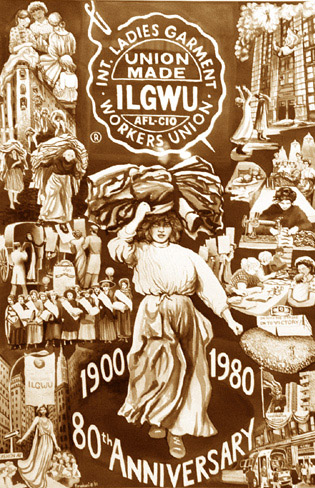
ILGWU Anniversary Poster
Commissioned by the ILGWU from the artist Letizia Pitigliani (1935-2012). Note the children sewing in the tenement, the women carrying heavy piles of piece work from the tenement to the shop, and the strikers being arrested.
